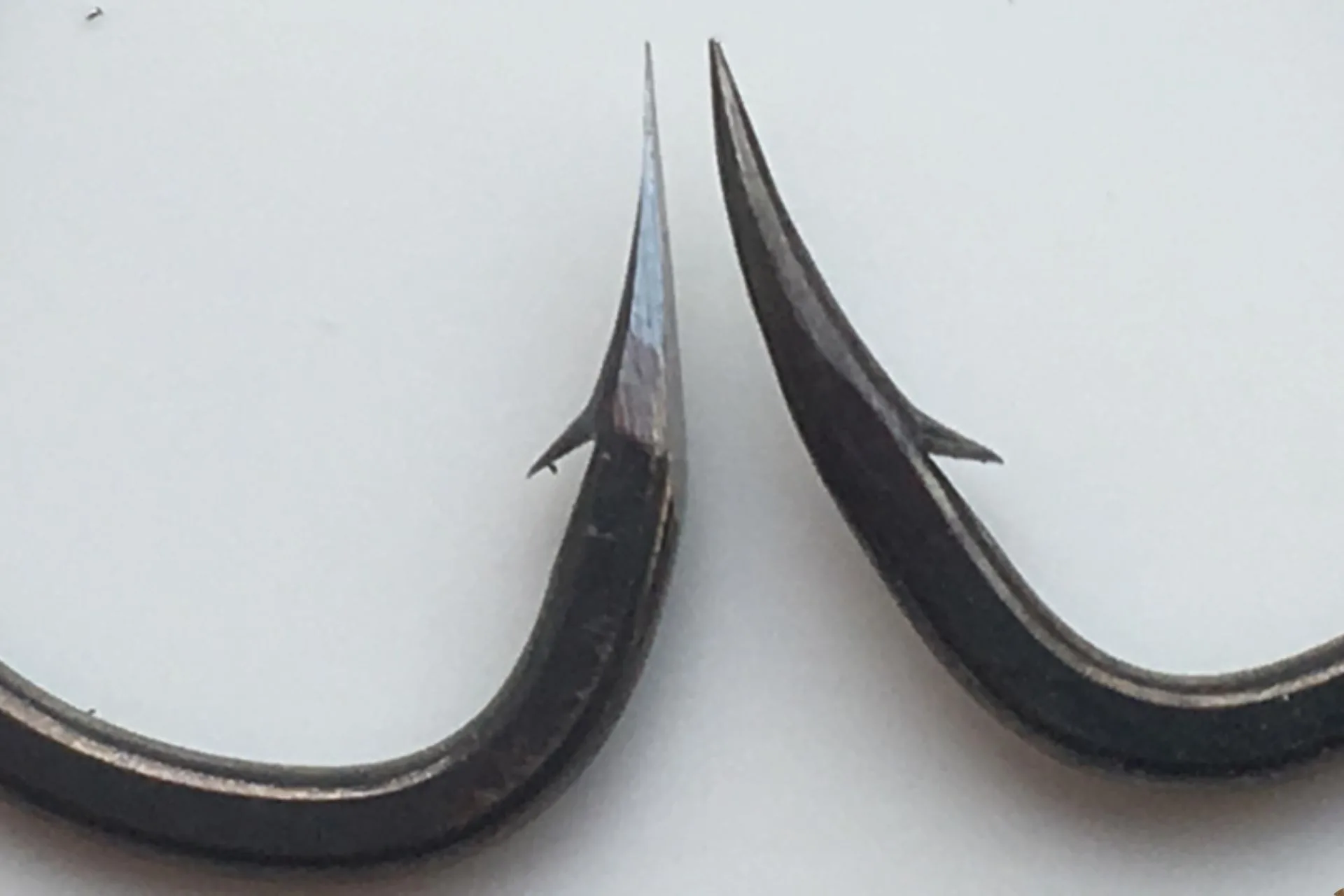Fishing hooks have been around for a long time. Native people have used hooks for thousands of years. Hand lines and hooks were a common Hunter Gatherer tool kit that has been found in many ancient sites.
The first hooks were made from bones, thorns, or sticks. Each style hook had a purpose and targeted a specific species of fish. Usually, bait would be attached to get a bite. Some early hooks had feathers attached to mimic a small insect or critter. As kids, we made our own hooks from safety pins, and wire. Zip tabs and can pop tops could also be cut and formed into a functional hook. They weren’t perfect but they worked.

What makes a fishing hook the best is relative to what the hook will be used for. Generally, hooks are evaluated on size, shape, material, thickness, and most importantly, sharpness.
Modern hooks are often made from wire. The wire is designed to bend but not break. An eye on the hook creates an attachment point. The hooks shank and gap will vary based upon what species of fish you are targeting.
BIG hooks can be forged or made from stainless steel. These huge hooks target huge fish and other critters like gators. They are made to be sharpened and not break or bend. These are not for Catch and Release and generally used in salt water.
Regular metal and wire hooks will rust. If they are left in a fish’s mouth, the water and digestive juices in the fish will dissolve the hook in a few days. Lost hooks will also dissolve if left wet or lost in the water.
Some fishing requires barbless hooks. This means that the point has no extra holding edge. Baitholder hooks may have barbs on the shank. Evidence does not show that barbless hooks cause less mortality. If a hook is taken deep, forceps will help to remove it safely. Cutting the line will allow the hook to later dissolve in the fish. Circle style hooks are harder for a fish to swallow. Longer shanked hooks allow a longer hook to grab and remove more easily. Most mortality in Catch and Release fishing comes from handling the fish improperly and taking too many selfies. Squeezing, dropping, and using a towel to wipe off body mucous causes more mortality than hooks.
Different fish have different feeding habits and shaped mouths. Fresh and saltwater fish also have different mouths and feeding habits. Carp have lips, bass have wide mouths, pike have toothy mouths, and other fish have unique characteristics. Other species require snagging or flossing. Salmon, on a spawning run will not feed. Flossing a hook across their mouth can snag them in the mouth. The law requires hooking in the mouth and nowhere else. Paddlefish just get legally snagged anywhere.
There are many great hook companies. Umpqua, Daiichi, Mustad, eagle Claw, Owner, and Gamakatsu are a few top brands.
My favorite hooks company is Gamakatsu. They use acid to sharpen the hooks and also a coating. When the hook is colored, it is now more than just a hook. It also mimics a worm or hides in a similar colored bait. Thes hooks come in a variety of shapes and sizes for the species of fish you are targeting. The consistent quality is excellent. They are also incredibly sharp but also easy to sharpen.
All hooks will need to be sharpened at some point. This one suggestion will increase your catch by three times. Use a file or stone to keep the point sharp. Hooks live amongst rocks and debris. These conditions easily will dull any hook. The fish’s mouth is made of hard cartilage which also dulls a hook. My favorite hook sharpener has a groove in it to slide the hook point along for a perfect point. I keep the sharpener handy and use it often. They come in a diamond coated pen style. The pen cap can go in the trash and attach a cord instead. Keep it pinned to your vest, near your forceps. Sharpening will improve all hooks.

Do your homework when selecting a hook. Different brands offer plenty of choice. There are times when a treble hook, double hook, or single hook may be a better choice. Too many hooks can reduce your catch. Go with suggestions and experience. Eventually you will develop confidence and choice based on your fishing success.
Get Hooked!
Montana Grant




